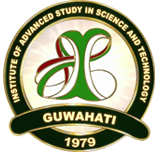The Basic and Applied Plasma Physics (BAPP) program at IASST is focused on two broad areas: 1) Basic Plasma Science which mainly includes study of fundamental processes in low temperature laboratory plasma and 2) Applied Plasma Science. The thrust areas of basic research in BAPP section are waves and instabilities in multicomponent plasma and in dusty plasma. In multicomponent plasma the recently discovered Peregrine soliton, the so called prototype of the rogue wave in the ocean has been investigated in its semi localized forms. In dusty plasma nonlinear wave phenomena associated with low frequency dust acoustic waves and nonlinear structures such as Mach cone, vortex formation etc., which are associated with dusty plasma flow has been a subject of intense investigation. Very low density plasma with near ionospheric plasma condition has been experimentally realised using a magnetic filter. The near ionospheric plasma is mixed with negative ions to study the sheath modification. In the applied plasma section, the research is being carried out on the development of Proton Exchange Membrane Fuel Cell (PEMFC) and efficient electrode assembly with the incorporation of nanostructured catalyst using plasma. Cold atmospheric pressure plasma systems have been developed for various applications including deposition of composite polymer films with selective properties on metal surfaces as well as water purification. A liquid plasma discharge reactor has been developed and utilized it for the synthesis of nanomaterial in water/ionic liquid. The synthesis process has the advantage of not using any highly toxic reducing agent. The liquid plasma reactor has potential application in synthesis of nanomaterial with tuneable optical and structural properties. A survey to develop a business model on IASST patented plasma coating process for bell metal industry of the country has been done.










